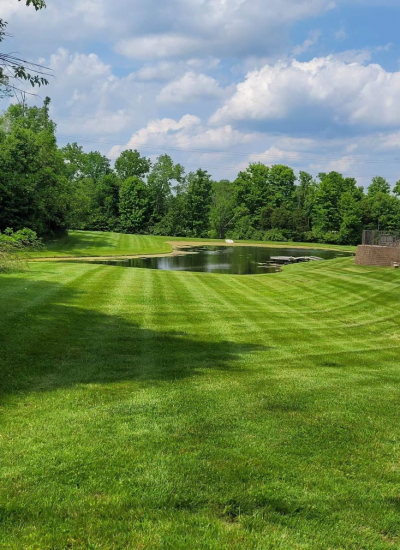Commercial landscaping is continuously evolving, with new trends emerging that focus on sustainability, functionality, and aesthetic appeal. Staying updated with these trends can help businesses enhance their properties, attract customers, and create a welcoming environment. This blog explores the top commercial landscaping trends to watch in 2024, highlighting modern and innovative landscaping practices that can transform your business property.
1. Sustainable and Eco-Friendly Landscaping
Sustainability continues to be a major focus in commercial landscaping. Businesses are increasingly adopting eco-friendly practices to reduce their environmental footprint and promote a healthier environment.
Native Plantings: Using native plants is a growing trend due to their adaptability to local climates and lower maintenance requirements. Native plants support local ecosystems, require less water, and are more resistant to pests and diseases.
Green Infrastructure: Incorporating green infrastructure elements like rain gardens, bioswales, and green roofs helps manage storm water runoff and reduces the urban heat island effect. These features also add visual interest and contribute to the property’s ecological value.
2. Technological Integration
The integration of technology into landscaping is transforming how commercial properties are maintained and managed. Innovative tools and systems are making landscaping more efficient and sustainable.
Smart Irrigation Systems: Smart irrigation systems use weather data and soil moisture sensors to optimize watering schedules, reducing water usage and ensuring plants receive the right amount of hydration.
Automated Maintenance: Robotic lawn mowers and automated garden tools are becoming more popular, offering precise and efficient maintenance with minimal human intervention. These technologies help maintain consistent landscape quality and reduce labor costs.
3. Multifunctional Outdoor Spaces
Businesses are increasingly designing landscapes that serve multiple purposes, providing spaces for relaxation, recreation, and social interaction.
Outdoor Workspaces: Creating outdoor workspaces with comfortable seating, shade structures, and Wi-Fi connectivity is a trend that enhances employee well-being and productivity. These spaces offer a refreshing change of environment and encourage creativity.
Social Areas: Landscaping designs now include areas for social gatherings, such as patios, pergolas, and outdoor dining spaces. These features make commercial properties more inviting and versatile, catering to both employees and visitors.
4. Low-Maintenance Landscaping
With a growing emphasis on efficiency and cost savings, low-maintenance landscaping is becoming a preferred choice for many businesses.
Drought-Tolerant Plants: Selecting drought-tolerant plants reduces the need for frequent watering and minimizes maintenance efforts. These plants are ideal for commercial properties looking to save on water bills and reduce upkeep.
Hardscaping Elements: Incorporating hardscaping elements such as stone pathways, gravel gardens, and decorative boulders can create visually appealing landscapes that require little maintenance. These features also provide structure and definition to the landscape.
5. Focus on Biodiversity
Promoting biodiversity through landscaping is an emerging trend that benefits both the environment and the community.
Pollinator Gardens: Planting gardens that attract pollinators like bees, butterflies, and birds helps support local wildlife and enhances the beauty of the landscape. These gardens often include a variety of flowering plants that bloom throughout the year.
Diverse Plantings: Using a diverse range of plants increases the landscape’s resilience to pests and diseases. A variety of plant species also creates a more dynamic and visually interesting environment.
FAQ
What are the latest trends in commercial landscaping? The latest trends in commercial landscaping include sustainable and eco-friendly practices, technological integration, multifunctional outdoor spaces, low-maintenance designs, and a focus on biodiversity.
How can businesses incorporate sustainable practices in their landscaping? Businesses can incorporate sustainable practices by using native plants, implementing green infrastructure, and installing smart irrigation systems. These practices reduce environmental impact and enhance the landscape’s resilience.
What are smart irrigation systems? Smart irrigation systems use weather data and soil moisture sensors to optimize watering schedules. These systems help conserve water and ensure plants receive the appropriate amount of hydration.
Why is low-maintenance landscaping popular? Low-maintenance landscaping is popular because it reduces ongoing maintenance costs and efforts. Using drought-tolerant plants and hardscaping elements minimizes the need for frequent care, saving time and resources.
How does promoting biodiversity benefit commercial landscapes? Promoting biodiversity through diverse plantings and pollinator gardens enhances the ecological value of the landscape. It supports local wildlife, increases resilience to pests and diseases, and creates a more vibrant and attractive environment.
By embracing these commercial landscaping trends, businesses can create beautiful, functional, and sustainable outdoor spaces that reflect their commitment to innovation and environmental responsibility. Whether through the adoption of smart technologies, the use of native plants, or the creation of multifunctional areas, these trends offer valuable opportunities to enhance commercial properties in 2024 and beyond.

